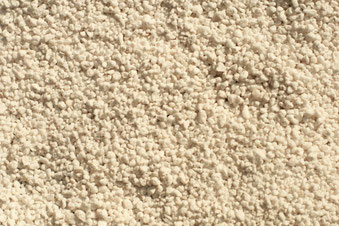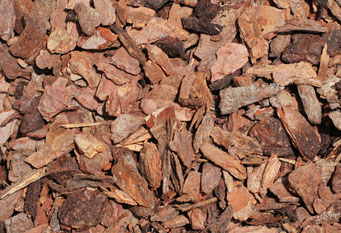Additives
Additives for substrate
There are various additives than can be added to substrate and that can influence its physical and chemical characteristics.
The additive we use the most is expanded perlite, but in addition to perlite it is also possible for us to add other types of additives.
Also, according to the needs of the customers, we can add ot not fertilizers of various types.
Expanded perlite

Expanded perlite is a rock that comes from the rapid cooling of the lava in the volcanic zones. The process of expansion of perlite begins washing it, then crushing and finally baking it, thus obtaining the commercial product of expanded perlite.
Expanded perlite is very light and allows to give the substrate a great aeration and to improve the retention of water.
Perlite helps the roots of the plants to breathe, it is a substitute for lightweight sand, commonly used in construction or as a substrate in hydroponic crops.
Tree bark

Tree bark is a residue of the production of debarked wood. Added to substrate, the tree bark helps to conserve soil moisture and prevents the growth of undesirable herbs.
Depending on the tree of origin, the bark may have various properties or functions. The bark is degraded naturally, allowing it to be a perfect organic additive for the substrate.
Another benefit of tree bark for the soil is that it is used as an organic fertilizer that gives very good results.
Fertilizers

Fertilizers are substances that contain nutrient assimilable by plants.
The objective is to improve the quality of the substrate on a nutritional level and thus stimulate the vegetative growth of plants.
El objetivo es el de mejorar la calidad del sustrato a nivel nutricional y así estimular el crecimiento vegetativo de las plantas.
We can offer our clients a great variety of fertilizers, so that they can work with the one that is best adapted to their crops.
For more information about the different types of additives we use, you can contact us.

Implantación de sistema ERP
EL PROYECTO “IMPLANTACIÓN DE SISTEMA DE INFORMACIÓN ERP”, HA SIDO FINANCIADO POR IVACE CON UN IMPORTE DE 14.465,24 € A TRAVÉS DEL PROGRAMA “DIGITALIZA-CV TRANSFORMACIÓN 2021” CON NÚMERO DE EXPEDIENTE IMDIGA/2021/202 Y COFINANCIADO POR EL FONDO EUROPEO DE DESARROLLO REGIONAL (FEDER). EL PROYECTO HA CONSISTIDO EN LA IMPLANTACIÓN DE UN ERP PARA LA OPTIMIZACIÓN Y AUTOMATIZACIÓN DE LOS PROCESOS DE INFORMACIÓN, QUE HA MEJORADO LA RECOPILACIÓN DE DATOS Y DOCUMENTACIÓN DE LA EMPRESA.

LA CONSELLERIA DE ECONOMÍA SOSTENIBLE, SECTORES PRODUCTIVOS, COMERCIO Y TRABAJO A TRAVÉS DEL PROGRAMA DE AYUDAS PARA LA MEJORA DE LA COMPETITIVIDAD Y SOSTENIBILIDAD DE LAS PYMES INDUSTRIALES HA SUBVENCIONADO NUESTRO PROYECTO PARA INCREMENTAR LA COMPETITIVIDAD Y PRODUCTIVIDAD MEDIANTE LA ADQUISICIÓN DE VARIOS EQUIPOS PRODUCTIVOS E INSTALACIONES PARA SUPUESTA EN MARCHA, CON NÚMERO DE EXPEDIENTE INPYME/2022/882 Y POR IMPORTE DE 156.070,25 €.
Agrimanter
C./Vereda 56 , 46184 San Antonio de Benageber , Valencia (Spain)
Tel. (+34) 961 340 342
mail: info@agrimanter.com
suscribe
© AGRIMANTER SL | B98816267 | Calle Vereda 56, San Antonio de Benagéber (46184) | Diseñado por Turiaweb

